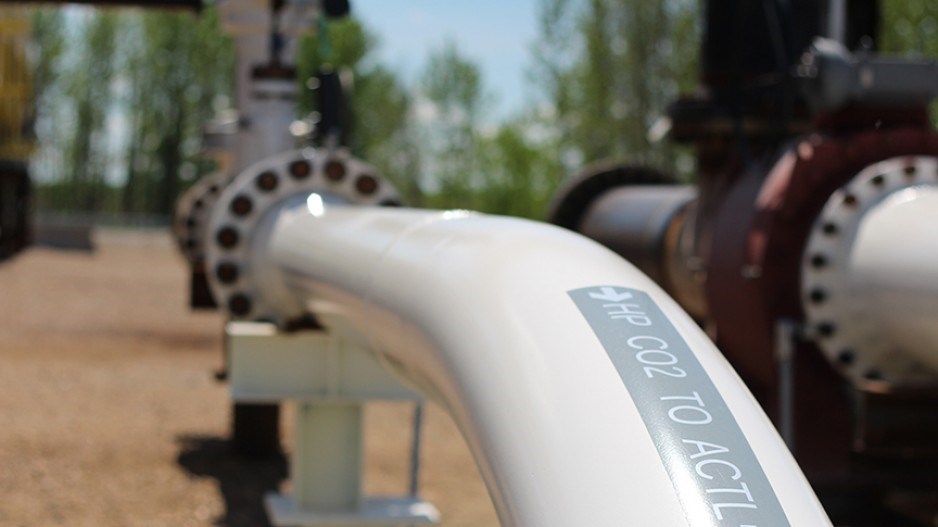This article was originally published in BIV Magazine's Climate Change issue.
Right now, most of the hydrogen produced in the world comes from natural gas through steam methane reforming. For every tonne of this “grey” hydrogen produced from natural gas, 11 tonnes of carbon dioxide (CO2) is produced.
Clearly, that’s a problem for countries that want hydrogen to play a role in net-zero commitments by 2050.
At some point in the future, the cost of producing zero-emission “green” hydrogen from water and electricity will come down. But right now, it would cost up to five times more to produce than “grey” hydrogen.
Even when carbon capture and storage is added – so-called “blue” hydrogen” – the cost is about $1.50 to $2 per tonne, compared to $3 to $5 per tonne for green hydrogen.
Until green hydrogen can compete, most hydrogen in North America is likely to be produced from natural gas through steam methane reforming, but with the CO2 captured and sequestered.
“They both have a role to play, but at different times,” says Wal van Lierop, executive chairman of Chrysalix Venture Capital. “There’s a role for carbon capture at-source in the next 15 years. Ultimately, you want to go to green hydrogen.”
One B.C. company, Svante, has positioned itself as a leader in point-source carbon capture, and sees blue hydrogen production as one of its most important markets.
“That’s a major, major focus of our market entry,” says Svante president and CEO Claude Letourneau. The other big market will be cement production.
Svante recently bumped their over-subscribed $75 million Series D financing to $100 million. One of the new investors is a major player in the Canadian energy space, Letourneau says, and its focus is blue hydrogen.
Formerly known as Inventys, Svante developed a point-source carbon capture process that it says is cheaper than the more conventional liquid amine process that has been used to date in most carbon capture and storage projects.
Svante developed a nano-material filter and a process that captures CO2 molecules coming from industrial processes, like steam methane reforming and cement production. It has been tested on a small scale at a Husky bitumen operation in Saskatchewan, where it captures 10,000 tonnes of CO2 annually.
“The next plant we are designing is 1.5 million tonnes a year,” Letourneau says.
With an abundance of cheap natural gas, both the U.S. and Canada are well situated to dominate the blue hydrogen space, so there could be big North American demand for Svante’s technology. In Canada, Alberta is poised to be the first blue hydrogen producer.
It not only has an abundance of natural gas and an existing grey hydrogen industry, but significant geological storage capacity for carbon sequestration as well. Alberta also has a new purpose-built CO2 pipeline – the Alberta Carbon Trunk line.
Chrysalix was one of Svante’s early investors. Van Lierop expects blue hydrogen will dominate the hydrogen production space up until about 2035, at which time it begins to be displaced by green hydrogen.
He likewise thinks direct-air carbon capture – a space B.C.-based Carbon Engineering is playing in – will be a “niche play” until 2035, after which it will begin to take over from point-source carbon capture.
Ultimately, it all comes down to cost.
CO2 accounts for just 0.04% of the content of the atmosphere, but the CO2 coming out of industrial flue stacks is a lot more concentrated. For example, the CO2 concentration from a cement plant is about 14%, Letourneau says, and 20% from steam methane reforming for producing hydrogen from natural gas.
It takes lot less energy and money to capture concentrated CO2 at its source than it does to pull it when highly diluted from the atmosphere.
The International Energy Agency has estimated the cost of direct-air capture at $150 to $350 per tonne. Svante says it can do point-source capture for blue hydrogen production for $50 per tonne.
That’s not to say direct-air carbon capture won’t be needed, but the immediate goal is to prevent CO2 from getting into the air in the first place from industries that simply cannot stop burning fossil fuels.
“We need all of it,” Letourneau says. “But the low-hanging fruit for costs is the SMR (steam methane reforming) and the cement.”
Svante’s technology also shows promise in bringing down the cost of direct-air carbon capture as well.
Last year, Svante signed a collaboration agreement with Climeworks, a Swiss company that, like Carbon Engineering, is working in the direct-air capture space. Climeworks hopes to bring the cost of direct-air capture down using Svante’s technology.
Read more: Hydrogen is hot, but it's more than hype
This article was originally published in the April 2021 issue of BIV Magazine. The digital magazine can be read in full here.




